What is the impact of different printing materials on printing accuracy?
The fluidity of the printing material in the molten state can affect printing precision, while the fluidity of different materials vary from each other. For example: the poor fluidity of stainless steel can result to higher accuracy by controlling the size of laser spot through the spot compensation technique.
What are the general elements that can affect the printing accuracy?
Generally, the following elements can have an impact on printing accuracy, e.g. powder layer thickness, scan distance, spot compensation, and scan speed.
What is the effect of the thermal expansion and cold contraction coefficient of the metal material on the printing accuracy?
The thermal expansion and cold contraction will have 0.00001% effect on printing accuracy, which is almost nothing.
Will temperature and humidity changes affect the accuracy of 3D printing?
The temperature of external environment can largely effect the motor and lens inside the galvanometer system so that to affect printing accuracy. The allowed room temperature is 25℃±3℃, while the allowed indoor humidity 45±15%.
Does layer thickness have an impact on printing accuracy? What is the minimum and maximum thickness?
Layer thickness will affect surface result but not printing accuracy. The minimum layer thickness is 0.02mm, while the maximum is 0.09mm. And the wall thickness is 0.3mm.
Will the uniformity metal powder influence printing accuracy?
Yes, the uniformity and stability of the powder has a great influence on printing accuracy. It is necessary to ensure the consistency of the thickness and height of the powder on a certain area. The thickness of the powder layer is required to be between 0.02mm and 0.09mm.
How to optimize the printing parameters to achieve higher accuracy?
To achieve higher accuracy, it is suggested to reduce the layer thickness and then provide different parameter packages according to the layer thickness of the material.
How do the printing direction and support structure affect the final printing accuracy?
The arrangement of the parts in printing should follow the principle of inverse recoater. Multiple angles are required for the part’s growth (through printing) direction and powder deposition direction, ensuring successive layers, block supports, and column supports. Supports serve two purposes: pulling and bearing loads.
How does the accuracy of the design document affect the printing accuracy?
The accuracy of the design document can affect printing accuracy greatly. According to the functional requirements of the parts, the design document will be retouched.The model is mostly triangular surface, and it needs to be retouched and to repair the damaged surface and then print.
What is the impact of the post-processing process on the printing accuracy?
Removing support is a manual experience of the work. To reduce the impact from post-processing processes on printing accuracy, support type should adjust to the structure of the printing part, especially when print inclined parts, no warping, continuous surface, as little as possible to add support.
How does the technical level of the operator affect the printing accuracy?
The impact of operators’ technical skills on printing precision is reflected in several aspects: cleanliness of the optical path, leveling of the substrate, leveling of the recoater, attention to the remaining service life of the filter cartridge, and manual adjustment of the circulating air volume based on experience.
How does the adhesion between different layers affect the accuracy?
The adhesion between different layers have no effect on printing accuracy.
What are the effects of laser power and focal length on printing accuracy?
The smaller the focal length of the F-theta field mirror, the higher the accuracy.
14. Does the temperature distribution uniformity of heat affect the printing accuracy?
The uniform distribution of heat refers to the uniformity of the thermal field, which has an impact on the printing accuracy, but the effect can be eliminated through spot compensation.
How does the thermal control system of printing equipment affect printing accuracy?
The thermal control system can have a large impact on printing accuracy. The cooling system of the galvanic mirror and light path system should be done well (cooling mode, circulating water, liquid nitrogen and argon), and the temperature of the build chamber should be well controlled to avoid heat transfer up (add heat dissipation module before gas enters filter element).
What is the effect of material particle size and uniformity on printing accuracy?
The ideal material particle size is between 15 and 53 microns; It can not be completely spread smoothly if the material particle size is too small, while the printed part will be highly rough if the material particle size is greater than 50 microns.
Does the design and layout of the supporting structure affect the printing accuracy?
Yes, the deformation of the part is related to the design and layout of the supporting structure. The amount of support has a direct impact on the surface printing roughness.
How do different printing directions (horizontal, vertical) affect accuracy?
Printing directions have almost non impact on printing accuracy, and the difference in performance between horizontal and vertical directions is very small.

